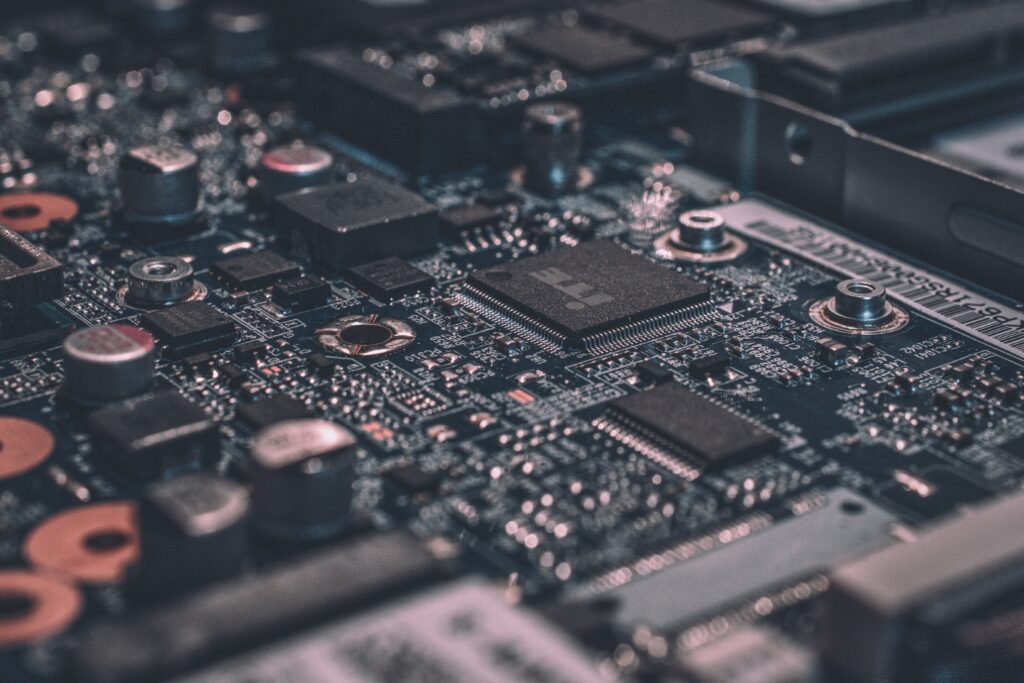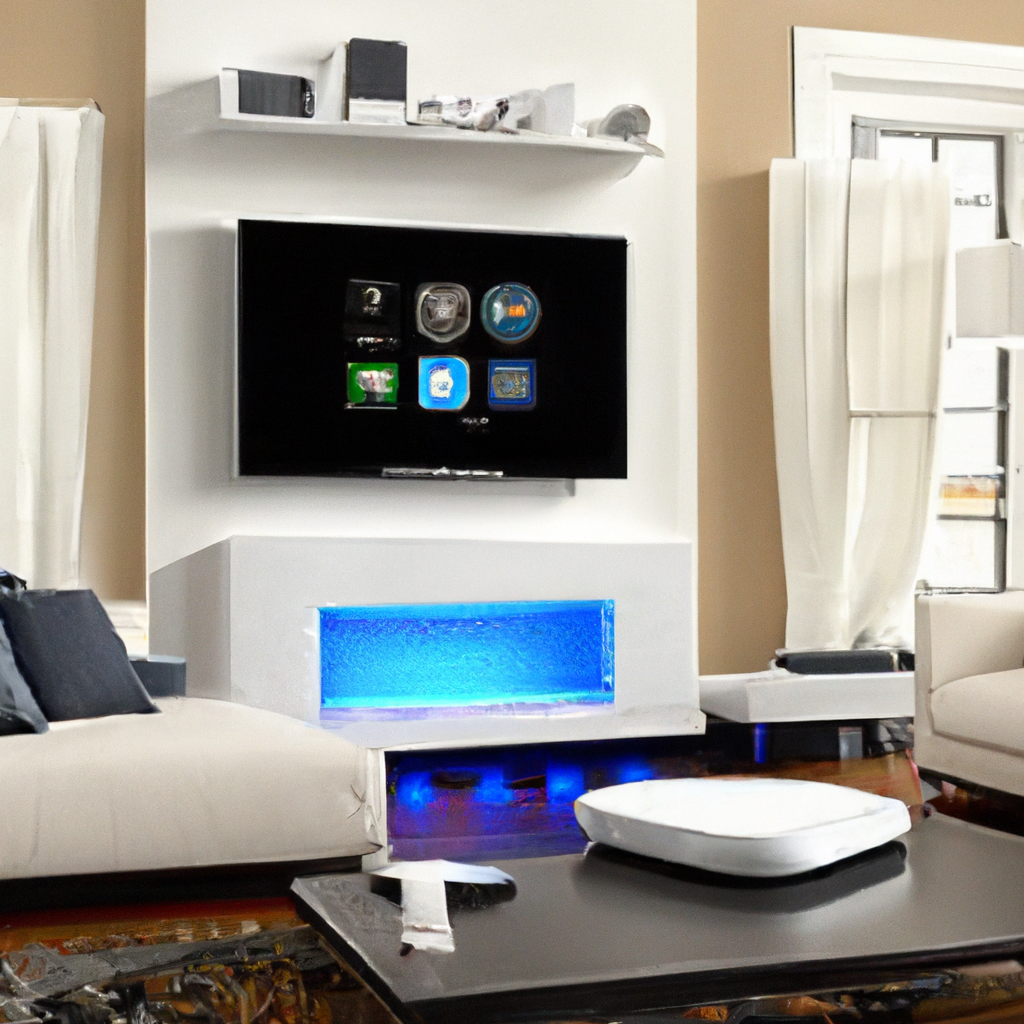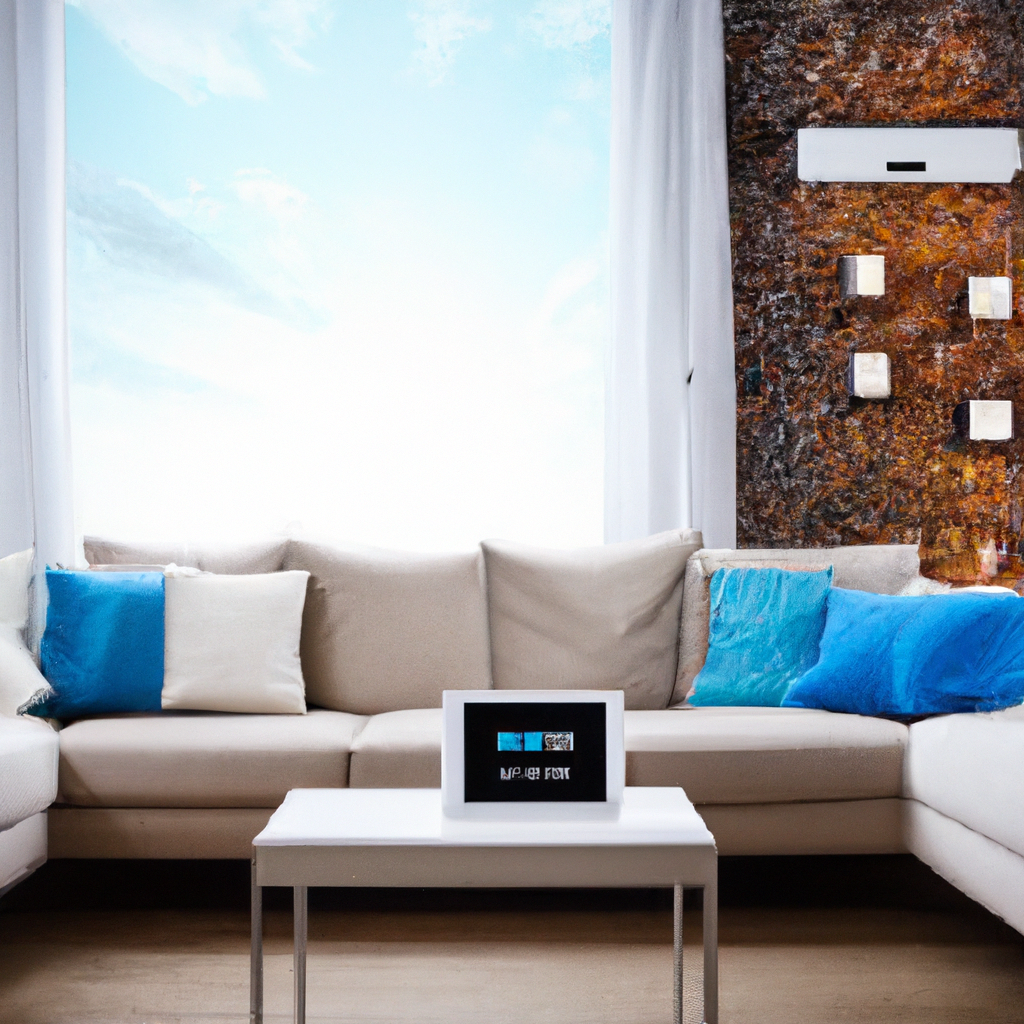Imagine walking into your living room and having it know exactly what temperature you prefer, what music you like to listen to, and even what TV show you’re in the middle of watching. AI, or artificial intelligence, can make this a reality in a smart living room. With the integration of AI technology, your living room can become a personal assistant that adapts to your needs, making your everyday life more convenient and enjoyable. Whether it’s controlling the lights, adjusting the thermostat, or even suggesting new movies to watch, AI is revolutionizing the way we interact with our living spaces.

The Basics of AI in a Smart Living Room
Understanding AI
Artificial Intelligence, commonly known as AI, refers to the development and utilization of computer systems that can perform tasks that require human intelligence. In a smart living room, AI technology is integrated to enhance convenience, efficiency, and personalization. By utilizing AI-powered devices, you can control various aspects of your living environment, customize experiences, manage routines, optimize energy usage, integrate with other smart appliances, and even assist with health and wellbeing.
Defining a Smart Living Room
A smart living room refers to a space that incorporates AI technology to automate and optimize various functions within the room. Using AI, the living room can respond to voice commands, recognize gestures, recommend personalized options, and perform routine tasks with minimal user input. From controlling devices to creating a personalized atmosphere, a smart living room allows for a seamless and advanced user experience.
Controlling Devices with AI
Voice Recognition Systems
One of the key features of a smart living room is the ability to control devices using voice commands. AI-powered voice recognition systems, such as Amazon Alexa or Google Assistant, enable you to control the lighting, adjust the temperature, play music, or even operate your TV, all without lifting a finger. Simply ask your virtual assistant to perform the desired action, and it will carry out the task for you. Voice recognition systems have seen significant advancements in accuracy and responsiveness, making them a convenient and user-friendly way to interact with your smart living room.
Gesture Control
In addition to voice recognition, AI technology also allows for gesture control in a smart living room. With the help of cameras or sensors, the room can detect and interpret hand movements, allowing you to control devices through gestures. For example, you can raise your hand to adjust the volume of the TV, swipe left or right to switch between channels, or even make a gesture to turn on or off the lights. Gesture control adds another layer of interaction and convenience, especially in situations where speaking aloud may not be feasible or desirable.
Smartphone Apps
Smartphone apps are another way to control devices in a smart living room. By connecting your smartphone to the AI-powered devices, you gain full control over various functionalities from the palm of your hand. These apps provide a user-friendly interface that allows you to manage and customize settings, control devices remotely, and receive notifications about the status of your living room. Whether you are at home or away, you can ensure that your living room is ready to welcome you with the desired ambiance and functionality.

Customizing the Living Environment
Adaptive Lighting
AI technology enables adaptive lighting in a smart living room, which adjusts the intensity, color, and temperature of the lighting based on various factors. By analyzing factors such as the time of day, natural light levels, and the activities being performed, AI algorithms can optimize the lighting to create the desired atmosphere. For example, during the evening, the lights can dim and shift to warmer tones, creating a cozy and relaxing environment. Adaptive lighting not only enhances the aesthetics of the living room but also saves energy and promotes a comfortable atmosphere for different activities.
Temperature Control
Another important aspect of a smart living room is temperature control. AI-powered thermostats and climate control systems can learn your preferences over time and automatically adjust the temperature to maintain a comfortable environment. Based on factors such as the time of day, weather conditions, and your personal preferences, AI algorithms can regulate the cooling or heating systems to ensure optimal comfort. Whether you prefer a cozy warmth during the winter or a refreshing coolness during the summer, AI technology can adapt to your needs and provide a pleasant living experience.
Music and Entertainment Preferences
AI plays a significant role in customizing the music and entertainment preferences in a smart living room. By analyzing your listening habits, AI algorithms can recommend songs, playlists, or radio stations that align with your preferences. Additionally, AI can seamlessly integrate with streaming services or music platforms, allowing you to control the music playback with simple voice commands or gestures. Whether you want to set the mood for a party or unwind with your favorite relaxing tunes, AI ensures that the living room atmosphere is tailored to your entertainment needs.
Enhancing Home Security
Smart Surveillance Systems
AI technology brings advanced surveillance capabilities to a smart living room. With the integration of smart cameras and sensors, the living room can be monitored and protected from potential threats. AI-powered surveillance systems can detect unusual activities or movements, alerting you in real-time and providing a sense of security. Furthermore, these systems can analyze patterns and behaviors to distinguish between regular activities and potential intrusions, minimizing false alarms and optimizing security measures.
Facial Recognition
Facial recognition technology adds another layer of security in a smart living room. By analyzing facial features, AI algorithms can identify individuals and differentiate between authorized and unauthorized occupants. This allows for personalized experiences and controlled access to certain functionalities or areas within the living room. Facial recognition technology can also aid in recognizing and alerting you to the presence of unfamiliar faces, ensuring enhanced security and peace of mind.
Intruder Alerts
In the event of a potential intrusion, AI-powered intruder alerts provide an immediate response to protect your smart living room. By integrating with various security systems, such as door/window sensors or motion detectors, AI algorithms can detect suspicious activities and trigger audible alarms or send notifications to your smartphone. This timely response enables you to take appropriate actions or notify the authorities, preventing potential threats and ensuring the safety of your living environment.

Creating Personalized Experiences
Customized Recommendations
AI technology enables personalized recommendations in a smart living room. By learning your preferences, routines, and interests, AI algorithms can suggest movies, TV shows, books, or games that align with your tastes. These recommendations can be based on your previous choices, relevant trends, or even inputs from other users with similar preferences. By tailoring the options to your liking, AI enhances your leisure time and ensures an enjoyable and customized entertainment experience.
Mood-Based Suggestions
AI can also closely monitor and understand your mood in a smart living room. By analyzing factors such as your facial expressions, voice tone, or even biometric data, AI algorithms can suggest activities, lighting settings, or music genres that are likely to uplift your mood. For example, if you appear stressed, the AI system may recommend playing calming music or adjusting the lighting to create a soothing ambiance. By adapting to your emotional state, AI enhances your overall wellbeing and promotes relaxation and happiness.
Interactive Conversations
With advancements in natural language processing, AI has become capable of engaging in interactive conversations in a smart living room. Virtual assistants, such as Siri or Cortana, can answer questions, provide information, or even hold casual conversations with you. These virtual assistants utilize AI algorithms to understand your queries and respond in a conversational manner. Whether you need to know the weather forecast, ask for a joke, or engage in a friendly chat, AI-powered virtual assistants are there to make your living room experience more interactive and enjoyable.
Automation and Routine Management
Automated Tasks
AI technology automates routine tasks in a smart living room, saving you time and effort. By setting up routines or schedules, AI-powered devices can carry out specific actions at predefined times or in response to certain triggers. For example, you can program the lights to turn on gradually in the morning to simulate a sunrise or instruct the coffee machine to start brewing your favorite blend as soon as you wake up. By automating these tasks, AI simplifies your daily routine and allows you to focus on other activities.
Scheduling and Reminders
AI also assists in scheduling and reminders within a smart living room. Using calendar synchronization and voice recognition, AI-powered devices can help you stay organized by reminding you of important events or tasks. For example, you can ask your voice assistant to set a reminder for a meeting or to notify you about upcoming birthdays. By keeping track of your schedule and providing timely reminders, AI technology ensures that you never miss important appointments or tasks.
Appliance Management
AI technology plays a crucial role in managing appliances in a smart living room. By monitoring their usage patterns, AI algorithms can optimize power consumption and reduce energy waste. For example, if a device is not in use, AI can automatically turn it off or put it in a low-power mode to save energy. Additionally, AI can provide recommendations for energy-efficient appliances or suggest customized usage patterns to maximize efficiency. Through appliance management, AI assists in creating an eco-friendly living environment while minimizing utility costs.

Energy Efficiency and Optimization
Smart Power Usage Monitoring
AI technology enables smart power usage monitoring in a smart living room. By analyzing the energy consumption of different devices, AI algorithms can provide detailed insights into your power usage patterns and highlight areas where energy can be saved. This information can be displayed on a user-friendly interface, allowing you to track your energy consumption and make informed decisions about appliance usage. With AI-powered power usage monitoring, you can take proactive steps to reduce your carbon footprint and contribute to a sustainable future.
Energy Saving Suggestions
In addition to monitoring power usage, AI technology can provide energy-saving suggestions in a smart living room. By analyzing historical data and external factors such as weather conditions, AI algorithms can recommend optimal settings for temperature control, lighting intensity, or device usage. For example, if the weather is sunny, AI may suggest maximizing natural lighting to reduce reliance on artificial light sources. These energy-saving suggestions help you make conscious choices and create an energy-efficient living environment.
Optimal Appliance Usage
AI technology optimizes the usage of appliances in a smart living room to promote energy efficiency. By learning your usage patterns and preferences, AI algorithms can recommend the most efficient modes or settings for individual appliances. For instance, AI can suggest using the eco-mode on your TV or setting the air conditioning to a moderate temperature to conserve energy. By making these recommendations based on your specific needs, AI ensures that you achieve both comfort and energy savings in your living room.
Integration with IoT Devices
Connecting Smart Appliances
AI enables seamless integration with other IoT devices in a smart living room. By connecting various smart appliances, such as the TV, speakers, thermostats, or security systems, AI serves as a central hub for controlling and managing these devices. Through a unified interface or voice commands, you can control multiple devices simultaneously and customize their interactions. For example, you can instruct your virtual assistant to turn off all devices when leaving the room or synchronize the lighting with the TV for an immersive movie experience. Integration with IoT devices enhances the overall functionality and convenience of a smart living room.
Interacting with IoT Devices
In addition to controlling IoT devices, AI facilitates interactive and intelligent interactions between them in a smart living room. By analyzing data from different devices and sensors, AI algorithms can automate actions based on specific conditions or trigger responses based on certain events. For instance, the living room lights can dim when the TV is turned on, or the thermostat can adjust the temperature based on the number of occupants detected by the motion sensors. These interconnected actions create a holistic and synchronized experience within a smart living room.
Data Sharing and Analysis
AI technology enables data sharing and analysis among connected IoT devices in a smart living room. By gathering information from various sensors or devices, AI algorithms can analyze patterns, draw insights, and make predictions about user behavior or preferences. For example, by analyzing data from the lighting system and motion sensors, AI can learn your preferred lighting settings for different activities throughout the day. This data sharing and analysis enhance the personalization and efficiency of a smart living room, ensuring that it adapts to your needs and preferences.

AI-Assisted Health and Wellbeing
Monitoring Vital Signs
AI technology plays a significant role in monitoring vital signs and promoting health within a smart living room. By integrating with wearable devices or smart sensors, AI algorithms can track metrics such as heart rate, sleep patterns, or stress levels. This data can be analyzed to provide insights about your overall health and wellbeing. For instance, AI can recommend adjustments to your living environment, such as dimming the lights or playing relaxing music, to facilitate better sleep. By monitoring vital signs, AI contributes to a healthier and more balanced lifestyle.
Personalized Fitness Guidance
AI technology provides personalized fitness guidance within a smart living room. By analyzing your fitness goals, activity levels, and preferences, AI algorithms can recommend suitable workout routines, exercises, or even classes that align with your requirements. These recommendations can be customized to your fitness level and progress, ensuring that you engage in activities that are both enjoyable and beneficial. Virtual trainers or fitness apps integrated with AI technology can guide you through workouts, track your performance, and provide real-time feedback, motivating you to achieve your fitness goals.
Virtual Assistants for Health Advice
AI-powered virtual assistants can assist with health advice in a smart living room. By analyzing data from wearable devices or sensors, as well as utilizing medical databases or trusted sources, AI algorithms can provide relevant health information or answer queries related to symptoms, medications, or general wellbeing. Whether you have a specific health concern or need guidance for a healthy lifestyle, these virtual assistants can offer reliable information and suggestions to help you make informed decisions about your health.
Privacy and Security Concerns
Data Protection and Encryption
While AI brings numerous benefits to a smart living room, privacy and data protection are important considerations. To address these concerns, AI systems should implement strong data protection measures, including encryption and secure storage. This ensures that your personal information and usage data remain private and protected from unauthorized access.
Safe Access Controls
AI systems in a smart living room should also include robust access controls to prevent unauthorized usage or breaches. User authentication mechanisms, such as passwords or biometric identification, should be implemented to ensure that only authorized individuals can interact with the AI-powered devices. This helps maintain the privacy and security of your personal information within the living room environment.
Potential Risks of AI
While AI technology enhances the functionality and convenience of a smart living room, there are potential risks that need to be considered. AI systems heavily rely on algorithms and machine learning, making them susceptible to biases or incorrect interpretations of data. This can lead to unintended actions or outcomes. It is crucial for developers and manufacturers to continuously monitor and improve AI systems to mitigate potential risks and ensure that they operate ethically and responsibly in a smart living room.
In conclusion, AI technology plays a significant role in transforming a regular living room into a smart living room. From controlling devices with voice recognition and gesture control to customizing the living environment and enhancing home security, AI enriches the user experience with convenience, personalization, and efficiency. Furthermore, AI facilitates automation and routine management, optimizes energy usage, integrates with IoT devices, assists in health and wellbeing, and addresses privacy and security concerns. By embracing the potential of AI, a smart living room offers a seamless and advanced living experience that adapts to your needs and enhances your daily life.
